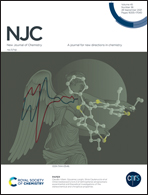Theoretical study on adiabatic electron affinity of fatty acids†
Abstract
As nutrients, secondary metabolites, essential signal molecules and energy sources, fatty acids play a vital role in biomedicine, pharmacokinetics and human metabolism. The reduction of fatty acids is one of the main ways to control the synthesis of fatty aldehydes and fatty alcohols. The resulting fatty aldehydes and fatty alcohols play a key role in many fields. Therefore, the fatty acid reduction reaction is an important type of chemical reaction, and one of the thermodynamic properties of adiabatic electron affinity (AEA), which describes the ability of fatty acids to obtain electrons, has become particularly important. In our research, we first calculated the AEA of 26 carboxylic acid compounds by using theoretical methods including 5 composite ab initio methods (G3, G4, G3B3, CBS-QB3 and CBS-Q) and 34 density functional theory (DFT) methods. It is found that ωB97X provides the most accurate result with a minimum root mean square error (RMSE) of 1.35 kcal mol−1. Therefore, the ωB97X method was used to study saturated and unsaturated fatty acids with different kinds of substituents. The results show that electron withdrawing groups (EWGs), electron donating groups (EDGs) and conjugated groups (CEG) have great and different effects on the AEA. In addition, natural bond orbital (NBO) analysis and geometric structural analysis and frontier orbital energy analysis was investigated to further reveal the change pattern of AEA values of fatty acids.



 Please wait while we load your content...
Please wait while we load your content...